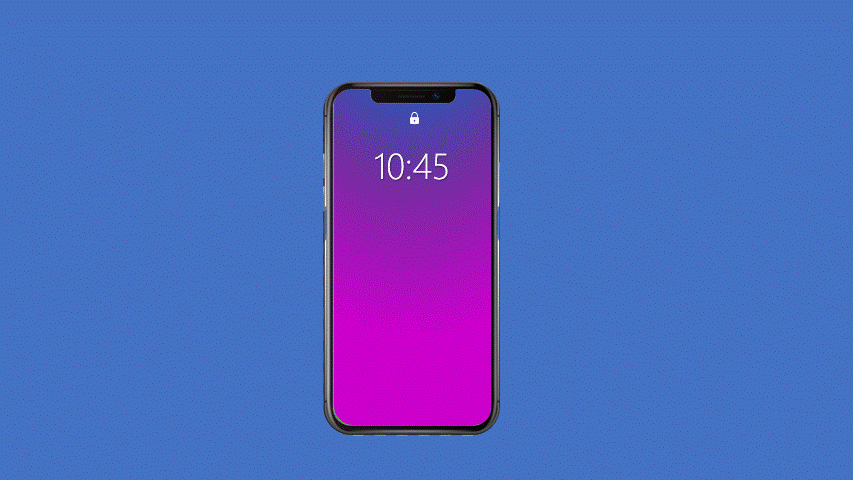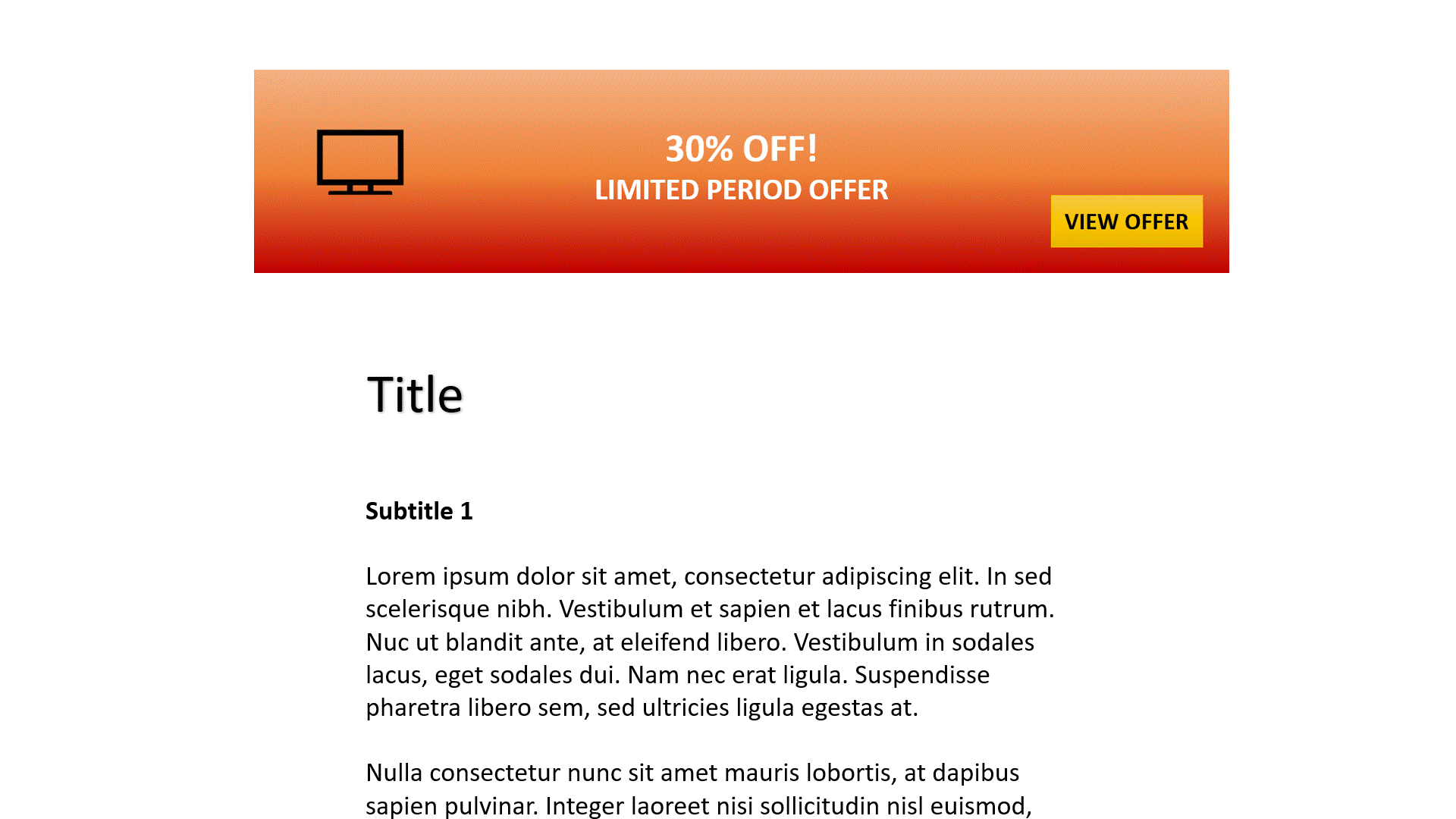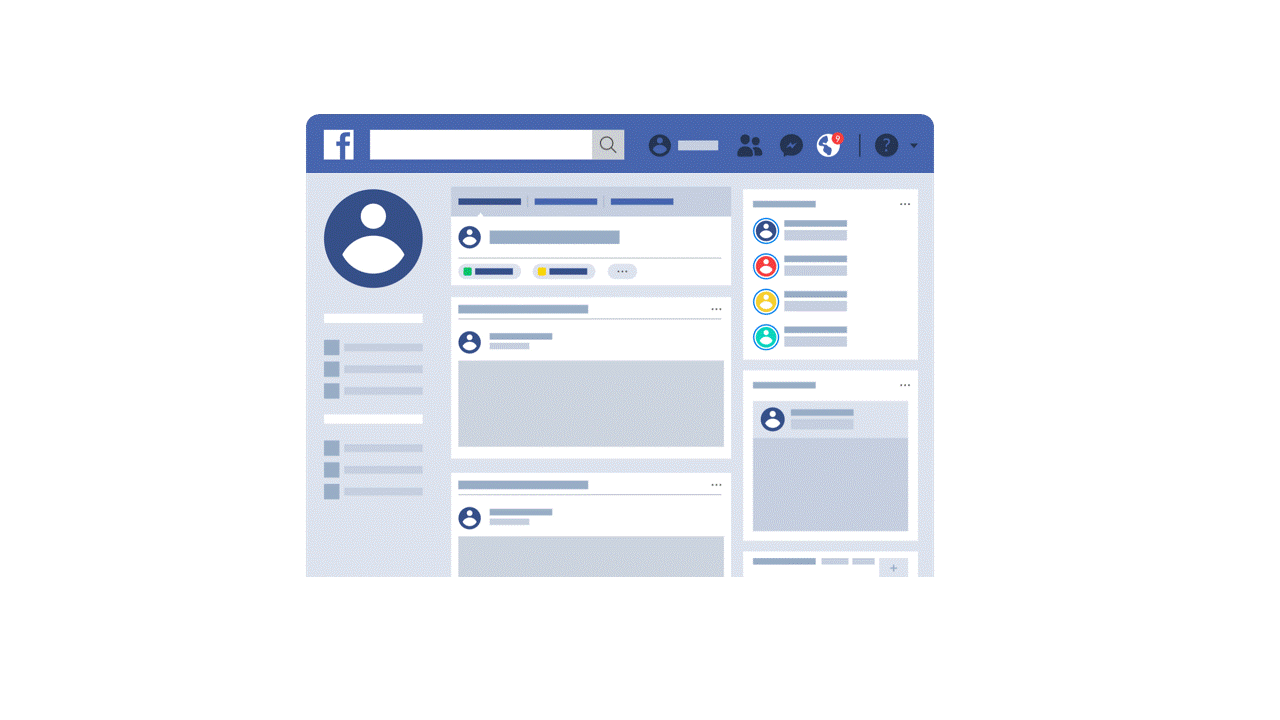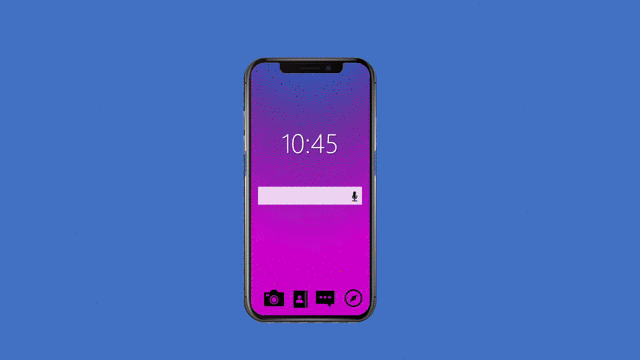5 Everyday Features that are designed to Manipulate our Online Behavior
As I begin to type this, my browser is open with multiple tabs, and I’ve got my headphones on and plugged in.
My phone sits right next to my laptop, and it's been quiet for the last couple of minutes, but it could ping or buzz any minute now, and deep down, I’m probably hoping that it does. Even though I’m sitting comfortably at my desk, I’m in a pretty precarious situation.
It is likely that you’ll find this very relatable unless you’ve somehow immunized yourself to the pulls of modern digital media, and the proverbial “fear of missing out.”
A lot of us are familiar with the steadily rising tide of digital adoption, as many of us have grown up in the midst of it. However, what’s less perceptible, is what it's leaving in its wake. Over time, digital devices have moved from the sidelines to take center stage in our lives-- in part due to the natural course of innovation and also due to recent global events that compel us to make all our interactions digital. This has major consequences that are not sufficiently understood, in a world where the word “digital” is often associated with a solution rather than a problem. However, while the idea of digitization began with the intention to save time and make life easier, there is growing evidence of adverse effects and consequences of digital device use that make them distracting, counterproductive, and even detrimental to our health. Some of these are unintended effects, while others result from some very deliberate design and engineering efforts that are intended to induce dependence, and sometimes, even addiction.
1. THOSE NIGGLING NOTIFICATIONS
For those who are unfamiliar with the term, a push notification is anything that flashes as an alert from an app on a smartphone, tablet, or other digital device. These include emails, WhatsApp texts, follow requests on Instagram, birthday reminders on Facebook, new discount deals on e-commerce apps, and so on. Depending on what your settings are, your phone might vibrate, emit a tone, or simply light up, indicating that there is an update that may require your attention. Notifications are such an integral part of life, that it is probably difficult to imagine it without them.
In an article published by TechCrunch, authors Vengoechea and Eyal aptly describe them as the “Pavlovian bells” of the 21st century.

GIFs made with icons from freepik
Push notifications were among the most groundbreaking innovations for businesses in the 21st century. What’s powerful about push notifications is that they can remotely draw a user’s attention to a brand or business even while their attention is turned elsewhere.
Those pings, tones, rings, and buzzes have a way of drawing our attention, and over time, we unknowingly form compulsive behavioral patterns that cause us to open our phones every time we hear a tone. The findings from a study conducted by researchers at the Florida State University in 2015 demonstrated just how true that may be.
In the study, about 150 students were asked to complete a well-known test of sustained attentional performance under two separate conditions. In the first, they attempted the test without being interrupted by their devices; and in the second, their phones were placed close to them, and experimenters deliberately made calls and sent texts to these numbers. The result? It was found that regardless of how subtle the distraction was, the performance of the participants suffered. Even the participants who heard and ignored the notifications on their phones showed a significant decline in their test performance. The results are telling-- the mere sound of a notification is enough to distract our attention. Even when we choose to ignore them, they can continue to have a magnetic pull on our attention, which is often only quelled by going over to our phones and checking them.
2. THE RECOMMENDATION RABBIT HOLE
In the 1960s, Lays’ potato chips introduced the teasing tagline “Betcha can’t eat just one!” The slogan gained widespread popularity around the world, becoming one of the most recognizable brand taglines.
Fast-forwarding to about 50 years later, the popular slogan is as apt as ever for something that was not even invented back in the 60s—recommendation systems. These are the intelligent, underlying algorithms in apps, websites, and social platforms that seek to predict a user’s preference and recommend content accordingly. On the homepage of YouTube, the first thing you’ll see is a grid consisting of seemingly random video thumbnails under the title “Recommended.” Though the display of this layout is identical for everyone, the thumbnails of videos that appear in your grid are unique to you. They’re all determined by the powerful algorithms that present recommended videos to you based on a number of metrics including the type of videos you watched in the past, the channels you subscribed to, your location, and even your search activity on Google (YouTube is a subsidiary of Google).

Let’s say one of those videos piques your interest. You make one innocuous click. You’re taken to the video page, and if you’ve ever paid close enough attention, you may have spotted something. As the video is starting up, a whole list of thumbnails of videos load on the right side, perhaps a fraction of a second before the current video starts. YouTube’s already curated a whole bunch of related videos that you “may” be interested in. On the right-hand side, you’ll notice one video thumbnail placed slightly above the rest of the thumbnails and separated from them by a fine line. YouTube tells you that this video is “Up Next” and by default, the video will play automatically right after your current video. In essence, when you click on any one video to watch it, you’re actually signing up to watch a whole series of videos that have been queued up for you. At any point in time, if you find a video uninteresting, a whole bunch of other videos are readily available in the vicinity to escape from it. Before you know it, a whole hour has passed, and you’ve gone down what’s colloquially dubbed as the “YouTube rabbit hole.” In 2018, YouTube’s Chief Product Officer revealed in an interview that over 70% of the videos streamed on YouTube suggested to users by YouTube’s recommendation systems. That’s right, for over 70% of the time that you spend on YouTube, its recommendation systems are guiding and ushering you around, showing you more content like a persuasive salesperson in a store. Recommendation systems are more powerful than you think in guiding behavior, and over time, they can lead you to spend unintended amounts of time on websites or apps.
3. ATTENTION-GRABBING ADS
A vast majority of the content on new media platforms is free for our perusal, and ads are the little caveats that serve as brief interruptions in an otherwise seamless experience. More often than not, these are negligible costs on our time, but on occasion, our curiosity does get the better of us, and we take the bait. And that’s exactly what platforms like Google and Facebook are waiting for us to do. One-click is usually all it takes for the complex advertising machinery to make quick deductions about our interests and probe further by displaying similar ads. Ad services are continuously tuning and sharpening their knowledge of us because their goal is simple-- get us to click on as many ads as possible, as more clicks translate to higher revenue.

In 2019, Google’s revenue from advertising was a staggering $134 billion, while Facebook’s ad earnings were estimated to be at around $70 billion. These figures grow every year, as the 2 advertising giants are always finding new avenues to advertise and maximize revenues from advertising.
However, Google and Facebook aren’t the only ones trying to maximize ad clicks-- advertisers themselves take even more deliberate actions to design their ads in a way that would lure users. Oftentimes, advertisers have only a couple of seconds to make an impression, so what was initially the 20-30-second elevator pitch is now a 5-second pitch, before users can choose to “Skip the Ad” on platforms like YouTube. With technologies like Google’s AdSense, advertisers also have the avenue to follow relevant audiences as they visit different websites, making multiple impressions across websites, and increasing the probability that users take notice of the ads and open them (Tucker 2014, 105).
Ads may seem like minor irritants that can be maneuvered around, but a combination of precise ad targeting and cleverly designed hooks in ad content can make digital ads additional impediments in our digital experiences.
4. FLOWING FEEDS
In 2005, researchers at Cornell University designed an experiment to understand how visual cues of portion size affected the quantity of intake. The participants of the study were given bowls of soup and instructed to keep eating until they were full. The interesting thing, however, was that there were two types of bowls. Some participants ate from generic bowls that they could ask the experimenters to refill if they wanted more, while the other participants ate from self-refilling bowls that automatically refilled as they ate, through tubes attached to the bottom. In other words, these were like “bottomless bowls,” which is also what the experiment came to be known as. It was found that the quantity of soup consumed by participants who ate from the self-refilling bowls was 73% more than the quantity consumed by those who ate from regular bowls. Strangely, participants who ate from self-refilling bowls didn’t even feel more satiated than the other participants.

If there’s something from our lives that makes this experiment relatable, it's the design of content feeds on social media platforms. The feeds that are at the very center of social media platforms like Facebook and Instagram can sometimes feel like those bottomless, self-refilling bowls. With little to no indication of how many items we’ve scrolled through and no end in sight, these feeds are designed for easy and guilt-free scrolling.
In his book titled “Hooked: How to Build Habit-forming Products,”, author Nir Eyal observes how the combination of mundane and relevant content on feeds of social platforms drives users to keep scrolling to search for the occasional reward of useful content.
“The stream of limitless information displayed in a scrolling interface makes for a compelling reward of the hunt. The Twitter timeline, for example, is filled with a mix of both mundane and relevant content. This variety creates an enticingly unpredictable user experience.”
(Eyal, 2014)
5. THE SCOPE OF SEARCH
The internet is like a sky-high tower or mountain, and almost anything under the sun is visible from it. Any passing thought, idea, or question in our minds can be easily indulged with a couple of clicks and keystrokes, and voila, the internet presents all the information we need at a lightning speed, and then some. This can be an alluring power to have at our fingertips, and often threatens to become a distraction.

The findings of a landmark study by neuroscientist Jaak Panksepp from Washington State University revealed that “seeking” is one of the fundamental impulses for all living beings like us. The need for sustenance is fulfilled by the urge to seek out everything from food to information, and this is driven by dopamine-- a key neurotransmitter in the body associated with motivation and reward-seeking behavior. This primal urge could be extending to our online search behaviors too, only, the reward is quite ambiguous. While trawling the internet may satisfy momentary curiosities, in the long-run, the habit of going down internet “rabbit-holes” may prove to be detrimental to learning and performance by dividing and distracting our attention from the tasks we initially set out to do.
Another fascinating finding from a 2015 study by researchers at Yale University suggested that online search behaviors may even be rewiring our brains. In a series of fMRI studies, it was reported that users often tended to overestimate their grasp of a subject after accessing information related to it online. Researchers observed that people were more likely to remember where they read or found a piece of information rather than the content of the information or its significance. We’ve all perhaps experienced this to some degree, perhaps after watching an informative documentary that made us feel smarter or after finishing an e-learning course that was surprisingly easy to pass.
Of course, the design of modern search interfaces also plays a role in turning us into internet wanderers. The ease of opening multiple new tabs, moving from one page to another, and watching embedded videos without having to exit pages makes for a frictionless experience. What begins as an innocuous pang of curiosity can lead to an hour-long deep dive into a completely unrelated subject, with productivity steadily diminishing by the minute.
The power of search may be a luxury of the modern-day internet, but as it applies to most other luxuries, the ability to limit its use can prove to be very difficult.
On a Final Note...
It’s hard to completely avoid the use of digital interfaces today. In the past 2 decades, there has been an unprecedented level of advancement in the design of digital interfaces, with minimized friction and increased ease of use and personalization. In his informative account on algorithms and machine intelligence, author and technology expert Kartik Hosanagar makes an important observation about our distractible behavior while online:
“The reason this behavior is so common, as some product designers have noted, is that popular design approaches—such as the use of notifications and gamification to increase user engagement-exploit and amplify human vulnerabilities, such as our need for social approval, or our inability to resist immediate gratification even when we recognize that it comes with long-term costs.”
(Hosanagar 2015)
Besides seeking to tap into visceral needs for social approval and quick gratification, the apps we use are also designed to minimize friction, creating a smooth and slippery slope to draw us in. In the sea of content and information all around us today, making simple, deliberate paths online is becoming increasingly challenging. With the prevalence of user-generated content and a steadily growing user base, there is an ocean of content to navigate through. Ironically, this abundance of choice can lead us to struggle to choose or be deliberate in our actions. In these moments of indecision, we may end up turning to the paths of least resistance—the recommended paths—which involve opening notifications, scrolling down feeds, and clicking on recommended content.
Now more than ever, there is a need for opportunities that allow us to become more aware of our digital consumption, determine what is useful and what isn’t, and most importantly, reclaim control over our ability to choose in our online experiences.
____________